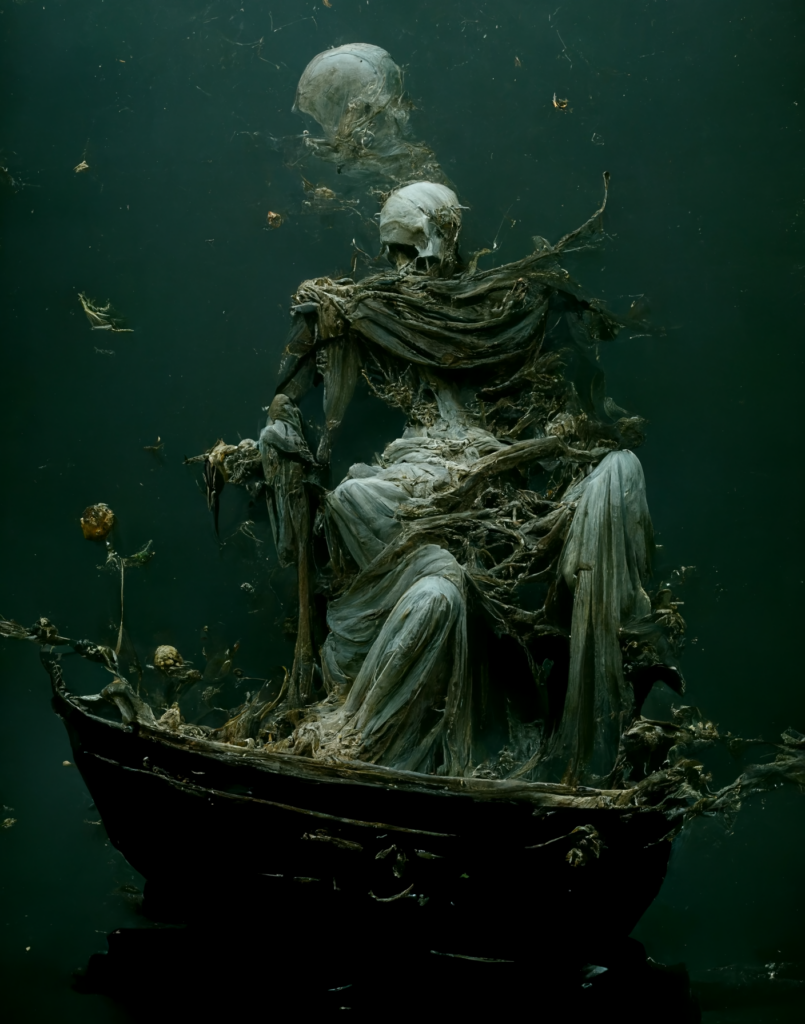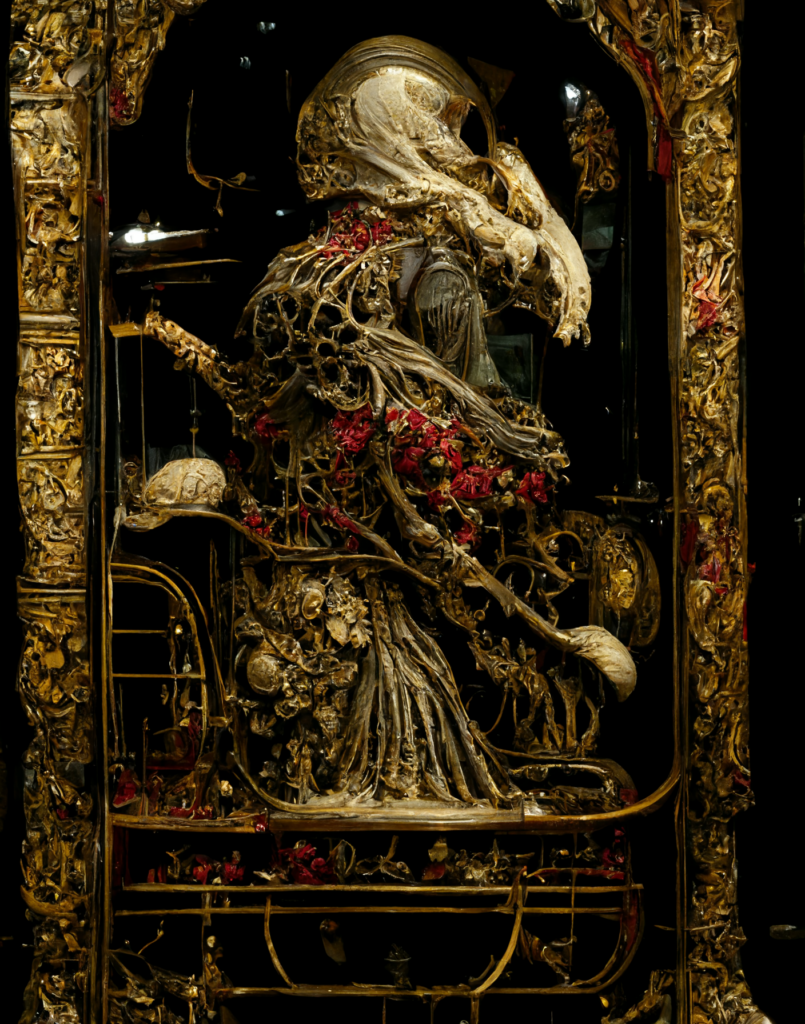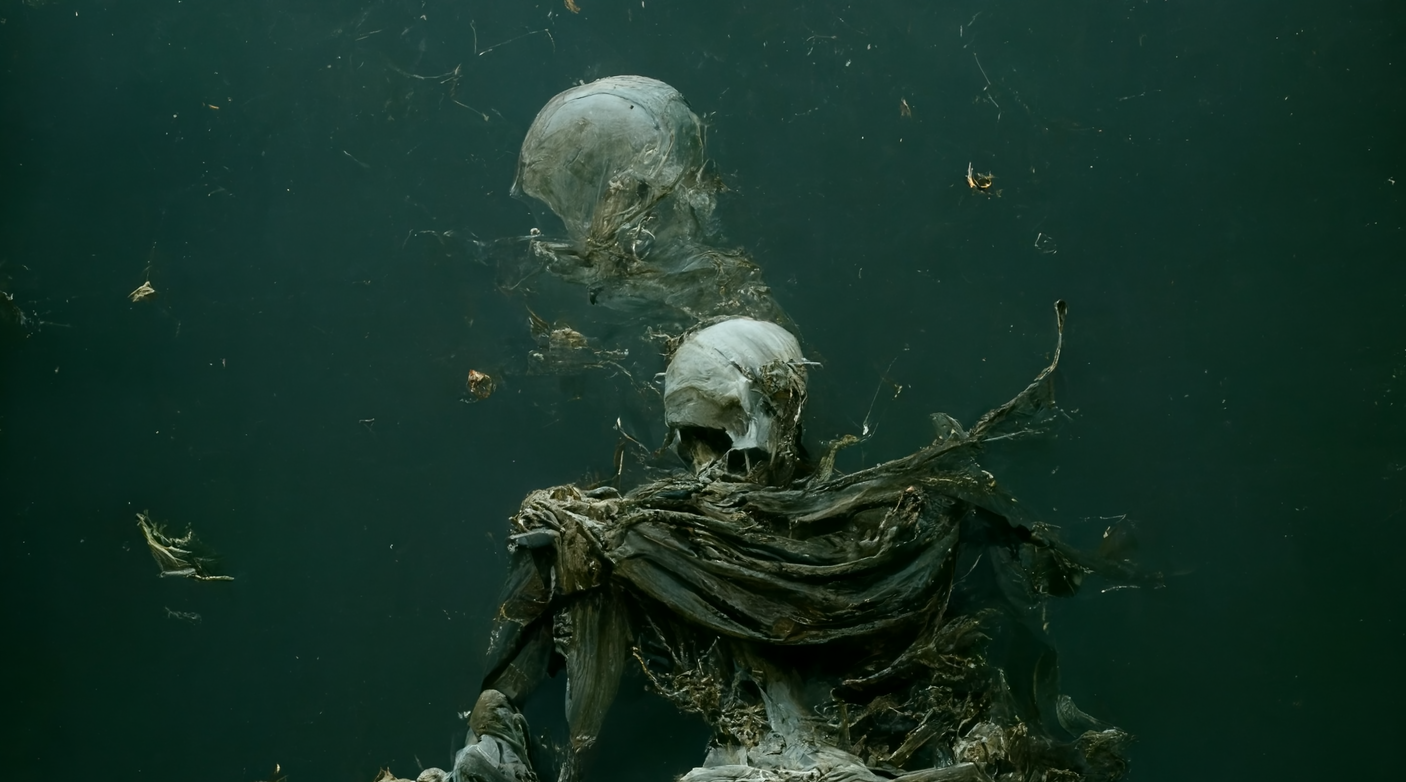In the Company of Monsters: New Visions, Ancient Myths is a new exhibition at Reading Museum featuring works by Eleanor Crook, Paul Reid, and Michael Ayrton. The exhibition is co-curated by Professor Emma Aston (Department of Classics) and Professor Andrew Mangham (English Literature and the Centre for Health Humanities). Classics student Shona Carter-Griffiths worked as an assistant on the exhibition and in this interview she asks Eleanor Crook about the use of AI in some of her artworks.

AI art refers to any form of digital art which is created with Artificial Intelligence tools. AI is a form of computer science which involves the development of machines that simulate human intelligence. AI art generators produce images based on text prompts which the artist provides; these images can then be built upon to create an original piece. AI allows more people to engage in artistic production, since it requires little technical or artistic skill in the traditional sense. Many believe AI is broadening the boundaries of innovation and creativity.
Does AI have artistic value?
Eleanor Crook thinks so, though she’s aware of its limitations and pitfalls. In the Company of Monsters features a number of her AI artworks. Each gloriously displays the other-worldly nature of the medium. The complexity of the scenes and the figures within them showcases the ingenuity of pieces produced through the generator, guided by the artist.
Crook utilised an AI Digital Art System called Midjourney to produce her series for the exhibition. Midjourney considers many methodical factors in its creation of art, including medium, colour palette, brush size and stroke patterns. Crook also mentions that she has taught the system how to envision the materials she uses in her sculpture work, including dark bronzes, wax and realistic materials, ensuring that her style infiltrates what the generator produces.
How does it work?
Crook describes the process of using Midjourney: ‘You start learning how to ask it to produce images by describing what you want to see, what styles/atmospheres, etc.’ She notes that demonstrations of example prompts are often simple, such as ‘a cat holding a banana in the desert’ and the system generates four pictures of this. ‘You choose one of the four, and begin to develop it. To add to a specific prompt you can say “a cat wearing an evening gown holding a banana in the desert” and it will develop the first image it made in that direction for you. Through many generations of elaborating images, you can end up with quite a complicated image containing a lot of your visual prompts.’

What Crook has encountered using Midjourney
‘As the algorithms have advanced, the inherent creativity of the unpredictable system has been snuffed out. It has been frustrating to see the creativity squished out of AI image making – “creativity” meaning the dreamlike, accidental qualities of it.’
Crook observes that Midjourney has gone through several iterations: ‘Not all of them produce the same results because its software isn’t trained on the same image sets. Also, its software has become more sophisticated at producing a predictable result, a commercial looking, slick result that corresponds to what the majority of its users want to see in their pictures.’
‘The harder the AI image generators try to please us, the less they actually please me. I spend a lot of my time trying to wrongfoot the system by entering difficult demands and you can see that the results I get hopefully have a certain amount of ambiguity and contradictory image and space in them.’
What are the ethical concerns with AI-generated art?
‘The technology has developed faster than our ability to legislate or even ethically make decisions about what it can do.’ The nature of how an AI generator accesses the images within its collection is uncertain. Crook refers to an AI generator, in this context, as ‘part-machine, part collective image encyclopaedia [which includes] any picture that’s been on the internet.’ This signifies the potential problems related to copyright and ownership of content.
The generators are ‘taught images by being trained on photographs, drawings, paintings.’ Many of these materials are created by artists of the past and present. Images are ‘pulled into the training set without the permission of the artists who made them.’ Crook believes that this is ethically dubious, and that it explains ‘why a lot of people are against AI generation. It can also put illustrators and film people out of business.’
Crook describes how she has witnessed the generator’s ability to capture the essence of her own works: ‘I have asked the generator for a bronze bust in the style of Eleanor Crook, and it produced pictures that made me pretty sure it has been shown images of my statue Santa Medicina in the Science Museum.’ Though this is an amazing demonstration of the generator’s capacity, the potential for piracy is undoubtedly a concern for artists. It is essential we acknowledge such issues and, for artists using AI, avoid infringing on the ownership of another artist’s work while using the software.

Exploring the possibilities of AI art
‘I was very interested to see what the possibilities were, and what kind of beast or machine I would be engaging with.’ The inhuman nature of the generator is certainly visible in Crook’s works, with technology lending her AI pieces an unsettling yet extraordinary attraction. Eleanor addresses her fascination with the future potential of AI art: ‘I am curious about what it can do, about how far it can go to replace us and curious to know whether it’s ever going to achieve a kind of consciousness of its own like it does in the science fiction novels of Philip K. Dick et al. It’s certainly a monstrous entity, and in that sense it really fits in the theme of our exhibition.’
In the Company of Monsters: New Visions, Ancient Myths runs until 24 February 2024. Eleanor Crook’s work can also be seen at https://www.eleanorcrook.net/.
Shona Carter-Griffiths is studying for the degree of BA (Hons) Classical Studies at the University of Reading; she has a keen interest in Ancient Greek epic, mythology and pottery.

